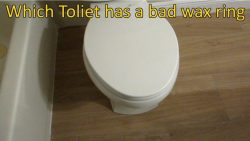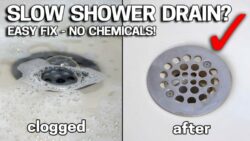Maintaining a sparkling and hygienic sink is crucial for any professional space or household. In this comprehensive guide, you will learn the ultimate strategies and techniques to effectively clean your sink using a simple yet powerful ingredient – baking soda. Discover how this versatile and readily available product can effortlessly remove stains, eliminate unpleasant odors, and restore the shine to your sink, leaving it not only clean but also feeling brand new. Say goodbye to stubborn grime and embrace a sink that radiates cleanliness and freshness with the power of baking soda.
Why Use Baking Soda for Sink Cleaning
Baking soda is a versatile and effective cleaning agent that can be used to clean various surfaces in your home, including your sink. There are several benefits to using baking soda for sink cleaning, making it a popular choice among homeowners.
Benefits of Using Baking Soda
One of the main benefits of using baking soda for sink cleaning is its effectiveness in removing stains and odors. Baking soda is a natural deodorizer and can help neutralize any unpleasant smells that may be lingering in your sink. Additionally, its mild abrasive properties make it excellent for tackling stubborn stains and grease buildup.
Another advantage of using baking soda is its non-toxic and eco-friendly nature. Unlike many chemical cleaners that contain harsh ingredients, baking soda is safe to use around pets and children. It is also a more sustainable option, as it reduces the need for chemical cleaners that can be detrimental to the environment.
How Baking Soda Works for Cleaning Sinks
Baking soda works by acting as a gentle abrasive, which helps to dislodge dirt, stains, and grease from the surface of your sink. When mixed with water, baking soda forms a paste that can be applied to the sink and scrubbed with a brush or sponge. The mild abrasive nature of baking soda helps to break down stains and grime without scratching or damaging the sink surface.
In addition to its abrasive properties, baking soda also has natural deodorizing abilities. It can help eliminate odors caused by food particles, bacteria, and other sources. By simply sprinkling baking soda in your sink and allowing it to sit for a few minutes, you can help freshen up your sink and remove any unpleasant odors.
Preparing Your Sink for Cleaning
Before diving into the sink cleaning process, it is important to properly prepare your sink. This ensures that you have a clean surface to work with and makes the cleaning process more efficient. Follow these steps to prepare your sink for cleaning:
Clearing the Sink of Dishes and Debris
Start by removing any dishes, utensils, or other items from your sink. This will allow you to have a clear workspace and prevent any accidental damage to your belongings.
Next, clear out any debris or food particles that may have accumulated in the sink. Use a paper towel or a small brush to remove any loose debris. This step is essential to ensure that the baking soda can fully penetrate and clean the sink surface.
Removing any Standing Water
If there is any standing water in your sink, it is important to remove it before proceeding with the cleaning process. Use a cup or a bucket to scoop out the water and dispose of it properly.
Removing standing water prevents the dilution of the baking soda paste and ensures that it can fully interact with the sink surface for effective cleaning.
Gathering Tools and Materials
Before starting the cleaning process, gather all the necessary tools and materials. This includes baking soda, a brush or sponge, a cloth or towel for drying, and any additional cleaning agents you may choose to use.
Make sure you have everything you need within reach to avoid interruptions during the cleaning process. This will help you maintain a steady workflow and achieve optimal results.
Basic Cleaning with Baking Soda
Once your sink is prepared, you can proceed with the basic cleaning process using baking soda. This method is suitable for regular maintenance and general cleaning of your sink. Follow these steps to clean your sink with baking soda:
Sprinkling Baking Soda onto the Sink Surface
Start by sprinkling a generous amount of baking soda on the sink surface. Focus on areas with visible stains, grease, or grime. You can also cover the entire sink surface for a thorough cleaning.
Ensure that the baking soda is evenly distributed and forms a thin layer across the sink surface. The mild abrasive properties of baking soda will aid in breaking down stubborn stains and grease during the next step.
Scrubbing the Sink with a Brush or Sponge
Using a brush or sponge, gently scrub the sink surface in circular motions. Pay attention to areas with visible stains or buildup. Apply slight pressure as needed, but avoid using excessive force that may damage the sink.
The baking soda will create a foaming action as it mixes with water and lifts dirt and grime from the sink surface. Continue scrubbing until you are satisfied with the cleanliness of your sink.
Rinsing and Drying the Sink
After scrubbing, rinse the sink thoroughly with water to remove any remaining baking soda residue. Use a clean cloth or towel to dry the sink surface completely. This step is important to prevent water spots and maintain a sparkling clean finish.
Ensure that your sink is completely dry before moving on to the next step. This will help prevent any potential issues such as mold or mildew growth.
Deep Cleaning with Baking Soda
In addition to basic cleaning, baking soda can also be used for deep cleaning your sink. This method is ideal for tackling stubborn stains, discoloration, and persistent odors. Follow these steps for deep cleaning your sink with baking soda:
Removing Stains and Discoloration
To remove stains and discoloration, create a paste by mixing baking soda with water. The consistency should be thick enough to stick to the sink surface.
Apply the baking soda paste to the stained areas of your sink and allow it to sit for approximately 15-30 minutes. The paste will work to break down the stains and lighten any discoloration.
After the designated time, use a brush or sponge to scrub the stained areas. The gentle abrasive action of baking soda will help lift the stains. Rinse the sink thoroughly with water and dry it with a cloth or towel.
Eliminating Unpleasant Odors
If your sink has persistent odors, baking soda can help eliminate them. You can simply sprinkle baking soda directly onto the sink surface and allow it to sit for at least 30 minutes or overnight for stronger odors.
The baking soda will absorb and neutralize the odors, leaving your sink smelling fresh. After the designated time, rinse the sink with water and dry it thoroughly.
Dealing with Stubborn Grease or Grime
For stubborn grease or grime buildup, baking soda can be combined with other cleaning agents for added effectiveness. One effective combination is baking soda and dish soap.
Create a paste by mixing baking soda with a small amount of dish soap. Apply the paste to the greasy or grimy areas of your sink and let it sit for a few minutes. Then, scrub the area with a brush or sponge to loosen the buildup.
Rinse the sink thoroughly with water to remove any residue and dry it with a cloth or towel. This combination of baking soda and dish soap will help cut through the grease and leave your sink clean and shiny.
Using Baking Soda on Different Sink Materials
Different types of sinks require slightly different cleaning approaches to ensure optimal results. Here are some tips for using baking soda on different sink materials:
Cleaning Stainless Steel Sinks
Stainless steel sinks are known for their durability and resistance to stains. Baking soda is safe to use on stainless steel and will not scratch or damage the surface. Follow the basic cleaning or deep cleaning methods mentioned earlier for stainless steel sinks.
After cleaning, you can add an extra shine to your stainless steel sink by wiping it with a cloth or sponge soaked in white vinegar. This will help remove any water spots and leave your sink looking polished.
Cleaning Porcelain Sinks
Porcelain sinks are more delicate and prone to scratching compared to stainless steel sinks. Therefore, it is important to use a gentle touch when cleaning with baking soda. Avoid applying excessive pressure and use a soft brush or sponge.
You can also create a paste using baking soda and hydrogen peroxide to remove stains from porcelain sinks. Apply the paste to the stained areas and let it sit for a few minutes before scrubbing gently. Rinse the sink thoroughly and dry it completely.
Cleaning Ceramic Sinks
Ceramic sinks are similar to porcelain sinks in terms of their delicate nature. Use a soft brush or sponge to avoid scratching the surface when cleaning with baking soda.
For cleaning tough stains on ceramic sinks, you can create a paste with baking soda and lemon juice. Lemon juice has natural bleaching properties that can help lift stains. Apply the paste to the stained areas, allow it to sit for a few minutes, and then scrub gently. Rinse the sink and dry it thoroughly.
Cleaning Composite Sinks
Composite sinks are a popular choice for modern kitchens due to their durability and design flexibility. Baking soda is safe to use on composite sinks, but it is essential to avoid using abrasive cleaning tools that may scratch the surface.
For regular cleaning, follow the basic cleaning method using baking soda. For tougher stains, you can create a paste with baking soda and hydrogen peroxide. Apply the paste to the stained areas, allow it to sit for a few minutes, and then scrub gently. Rinse thoroughly and dry the sink completely.
Creative Tips and Tricks for Sink Cleaning
In addition to the basic and deep cleaning methods, there are several creative tips and tricks you can employ to enhance your sink cleaning experience. These methods can help tackle specific issues or add a refreshing touch to your sink cleaning routine:
Adding Vinegar for Extra Cleaning Power
Vinegar is a versatile household cleaner known for its disinfecting and deodorizing properties. You can enhance the cleaning power of baking soda by combining it with vinegar.
After applying baking soda to your sink, spray vinegar over the baking soda. The reaction between baking soda and vinegar creates a bubbling action that helps dislodge dirt and grime. Scrub the sink surface as usual and rinse thoroughly.
Using Lemon Juice for a Fresh Scent
Lemon juice not only adds a fresh scent to your sink but also acts as a natural bleaching agent. After cleaning your sink with baking soda, you can rub lemon juice onto the sink surface for an extra brightening effect.
Squeeze fresh lemon juice onto a cloth or sponge and rub it onto the sink surface. This will help remove any residual stains and add a refreshing scent to your sink.
Tackling Rust Stains with Baking Soda
Rust stains can be challenging to remove, but baking soda can help tackle them effectively. Create a paste with baking soda and water and apply it to the rust-stained areas. Let the paste sit for a few minutes and then scrub gently with a brush or sponge.
For tougher rust stains, you can also use a paste made from baking soda and hydrogen peroxide. Scrub the stained areas and rinse thoroughly. Repeat the process if necessary until the rust stains are completely removed.
Unclogging Drains with Baking Soda
Baking soda can also be used to unclog drains and prevent unpleasant odors. To unclog your sink’s drain, pour half a cup of baking soda down the drain followed by half a cup of vinegar. Allow the mixture to foam for a few minutes.
Next, pour boiling water down the drain to help flush away any remaining debris. This method can help remove minor clogs and keep your drain smelling fresh.
Maintaining a Clean and Fresh Sink
Once you have successfully cleaned your sink with baking soda, it is important to maintain its cleanliness and freshness. By following these maintenance tips, you can ensure that your sink remains in optimal condition for an extended period:
Regularly Wiping Down the Sink
Make it a habit to wipe down your sink regularly after each use. Use a cloth or sponge to remove any water spots, food particles, or soap residue. This simple step will help prevent the accumulation of dirt and grime and make your future cleaning tasks easier.
Preventing Stains and Build-up
To prevent stains and build-up in your sink, avoid leaving dirty dishes, utensils, or other items in the sink for an extended period. Clean up after each meal and ensure that the sink is free from food particles or other debris.
Additionally, avoid using harsh chemicals or abrasive cleaners that can damage the sink surface. Stick to gentle cleaning agents like baking soda and vinegar to maintain the integrity of your sink.
Avoiding Harsh Abrasives or Cleaners
While baking soda is a gentle cleaning agent, it is important to avoid using harsh abrasives or cleaners that can damage your sink. This includes steel wool, scouring pads, or cleaners that contain bleach or ammonia.
Stick to soft brushes, sponges, and non-abrasive cleaning agents like baking soda to protect your sink and ensure its longevity.
Safety Precautions when Cleaning with Baking Soda
While baking soda is generally safe to use, it is important to follow some safety precautions to ensure your well-being:
Proper Ventilation
When using baking soda for sink cleaning or any cleaning task, make sure the area is well-ventilated. Open windows and turn on fans to circulate fresh air. This will help prevent any inhalation of baking soda particles or fumes.
Wearing Gloves and Protective Gear
To protect your hands, it is recommended to wear gloves when cleaning with baking soda. This will help prevent any skin irritation or dryness that may occur due to prolonged contact with baking soda.
If you are using any additional cleaning agents, make sure to read and follow the manufacturer’s instructions for any necessary protective gear.
Avoiding Mixing Baking Soda with Bleach or Ammonia
Mixing baking soda with bleach or ammonia can create harmful fumes. Avoid combining these substances, as it may result in toxic reactions. Stick to using baking soda with other safe cleaning agents like vinegar, lemon juice, or hydrogen peroxide.
Eco-Friendly Benefits of Baking Soda for Sink Cleaning
Baking soda is not only effective at cleaning sinks but also offers several eco-friendly benefits. By choosing baking soda as your go-to sink cleaner, you can contribute to a more sustainable and healthier environment. Here are some eco-friendly benefits of using baking soda for sink cleaning:
Using a Natural and Non-Toxic Cleaner
Unlike many traditional chemical cleaners, baking soda is a natural and non-toxic cleaning agent. It does not release harmful fumes or leave behind chemical residues that can be detrimental to your health or the environment.
By opting for baking soda, you are reducing your exposure to harsh chemicals and minimizing the negative impact on aquatic ecosystems and air quality.
Reducing the Use of Chemical Cleaners
By incorporating baking soda into your sink cleaning routine, you can reduce the need for chemical cleaners. This helps minimize the production and consumption of chemical-based products that can be harmful to the environment.
Baking soda is a cost-effective and readily available alternative to chemical cleaners that often come in plastic bottles. By making the switch, you are making a positive impact on sustainability and waste reduction.
Cleaning your sink with baking soda offers a natural, effective, and environmentally friendly approach to maintaining a clean and fresh sink. Whether you are dealing with stains, odors, or stubborn grease and grime, baking soda can help restore the sparkle to your sink.
By following the outlined steps and tips, you can achieve a sparkling clean and odor-free sink without the use of harsh chemicals. Remember to take safety precautions, choose the appropriate cleaning methods for your sink material, and maintain regular cleaning and maintenance practices for long-lasting results.
Embrace the power of baking soda for sink cleaning and enjoy a cleaner, healthier, and more eco-friendly kitchen environment.





